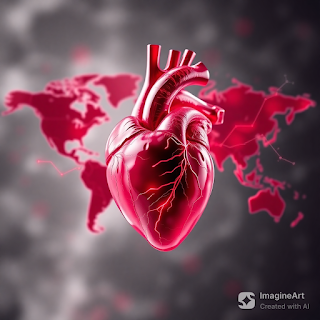Plastics may be silently harming your heart. Learn how common chemicals like DEHP and microplastics are linked to global heart disease deaths.
💔 Introduction: The Hidden Danger in Our Homes
Imagine this: you're sipping water from a plastic bottle, storing leftovers in plastic containers, or applying your favorite lotion. Unbeknownst to many, these everyday actions might be contributing to a silent, global health crisis.
Recent research has unveiled a startling connection between common chemicals found in plastics and a significant number of heart disease deaths worldwide. These findings suggest that substances we encounter daily could be impacting our cardiovascular health more than previously understood.
🧪 The Culprit: DEHP and Its Global Impact
A study by NYU Langone Health has linked exposure to di-2-ethylhexyl phthalate (DEHP)—a plasticizer used to make plastics more flexible—to approximately 356,238 heart disease deaths globally in 2018 among adults aged 55 to 64. The Washington Post+3New York Post+3People.com+3
DEHP is prevalent in numerous household items, including food containers, medical equipment, perfumes, and cleaning supplies. The study suggests that DEHP may trigger inflammation in heart arteries, increasing risks of heart attacks and strokes.The Sun+2New York Post+2People.com+2
Regions such as South Asia, the Middle East, and East Asia, particularly countries like India, China, and Indonesia, experienced the highest death tolls. New York Post+1The Sun+1
🧬 Microplastics: Tiny Particles, Big Problems
Beyond DEHP, microplastics—minute plastic particles less than 5mm in size—have been detected in human organs, including blood, lungs, and even the brain. New York Post+3The Guardian+3Healthline+3
A study published in The New England Journal of Medicine found that individuals with microplastics in their arterial plaque were 4.5 times more likely to suffer a heart attack, stroke, or death compared to those without. New York Post+8Healthline+8Health+8
These findings underscore the potential health risks posed by microplastics, which are pervasive in our environment and daily lives.
🌍 Disproportionate Impact on Developing Regions
The health risks associated with plastic-related chemicals are not evenly distributed. Developing regions, often with less stringent environmental regulations, bear a disproportionate burden. For instance, India alone reported over 100,000 DEHP-related deaths in 2018. People.com
The global economic impact of these deaths is staggering, with estimates ranging from $510 billion to over $3.7 trillion. New York Post
🛡️ Steps to Mitigate Exposure
While systemic changes are essential, individuals can take steps to reduce exposure:
-
Avoid heating food in plastic containers: Use glass or ceramic alternatives instead.The Guardian+13New York Post+13The Guardian+13
-
Be cautious with personal care products: Choose items free from phthalates and labeled as "fragrance-free."New York Post
-
Limit use of single-use plastics: Opt for reusable bags, bottles, and containers.
-
Stay informed: Utilize resources like the Environmental Working Group’s (EWG) databases to identify safer products.New York Post
🧠 Conclusion: Rethinking Our Relationship with Plastics
The evidence linking common plastic chemicals to heart disease is mounting. As these substances permeate our environment and bodies, it's imperative to reassess our reliance on plastics.Harvard Health
By making informed choices and advocating for stronger regulations, we can collectively work towards a healthier future.
Tags: #HeartHealth #Plastics #Microplastics #EnvironmentalHealth #PublicHealth #DEHP #Phthalates #CardiovascularDisease
For further reading:











Comments
Post a Comment